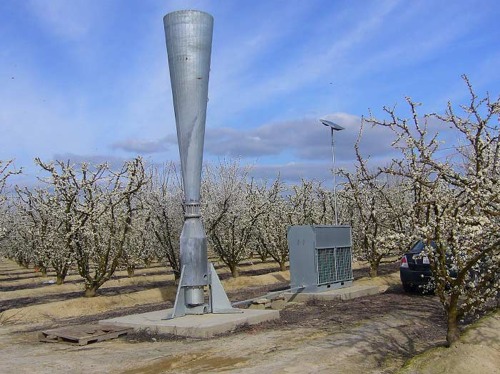 |
| hail cannons in 1901 |
 |
| modern hail cannon installation (from boingboing) |
It doesn't seem like anyone has seriously tried to evaluate whether this approach works. In 1981, a review of the evidence suggested that our understanding had changed little between 1902 and 1975:
 |
| From: History Repeated: The Forgotten Hail Cannons of Europe Stanley A. Changnon Jr. and J. Loreena Ivens (BAMS, 1981) |
A more recent review contains additional interesting history:
[H]ail cannons are the best known apparatus to fight hail by force. They direct the sound of an acetylene explosion, more than 120 dB, upward by way of a conical vertical muzzle. Originally these cannons were developed in 1896 by Albert Stiger, an Austrian winegrower. When in Stiger's valley no hail had fallen for two years, employing these cannons became an immense craze in Austria and in northern Italy. A cannon industry developed, and over ten thousand cannons were employed in the region around 1900. At a hail conference in Lyon in 1901, many different makes of cannon were offered for sale (Fig.5). However, when regularly locations with plenty of cannons were heavily damaged by hail, public confidence decreased and the authorities organized a systematic experiment of several years in some Austrian and Italian regions. By the time that this experiment was concluded in 1906, most farmers already had sold their useless cannons as scrap iron (PERNTER, 1907; ODDIE, 1965; CHANGNON and IVENS, 1981)RCT anyone?
No comments:
Post a Comment